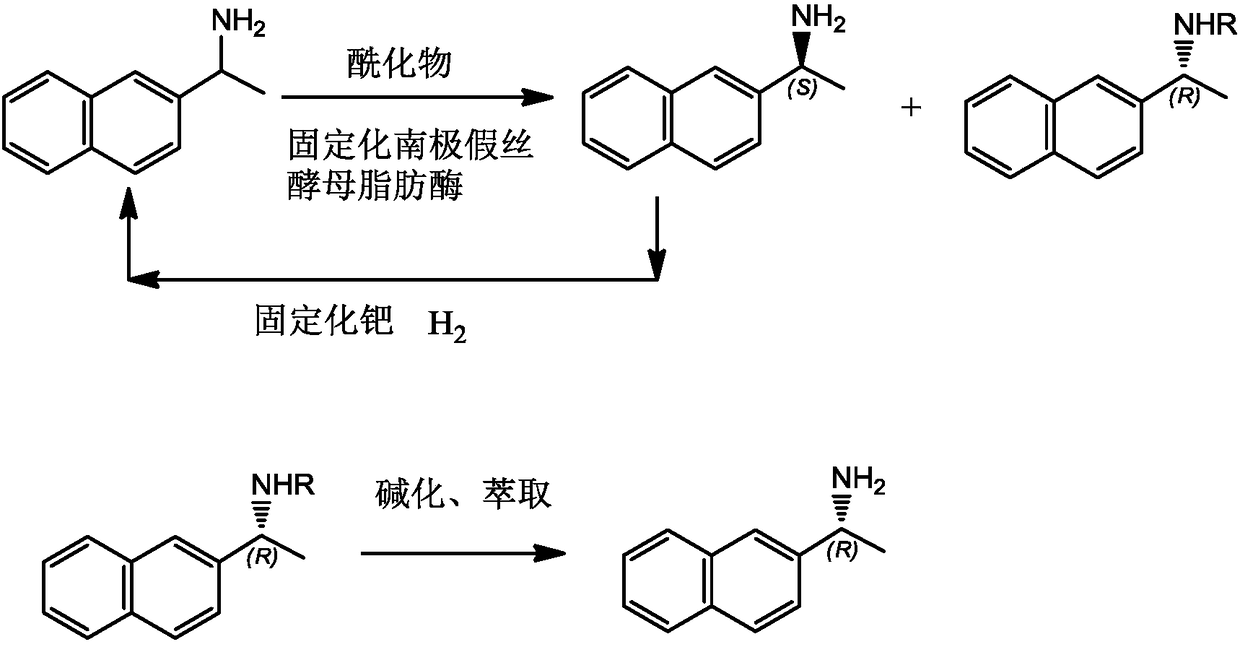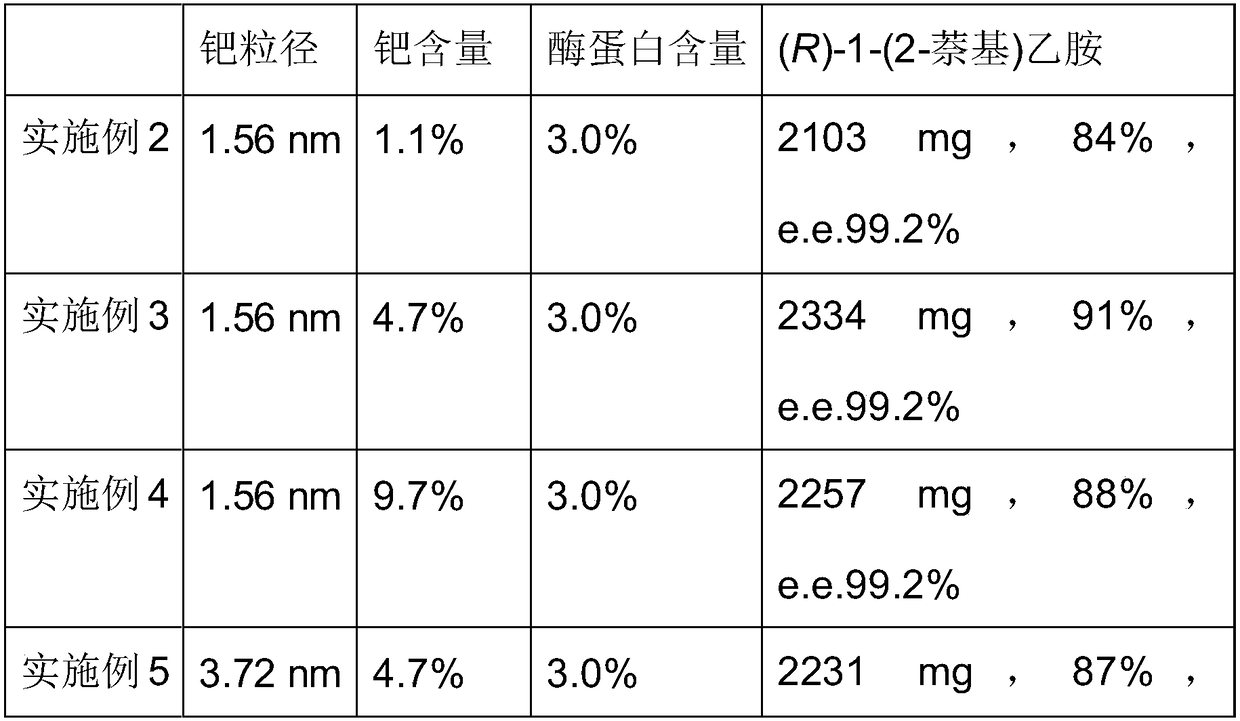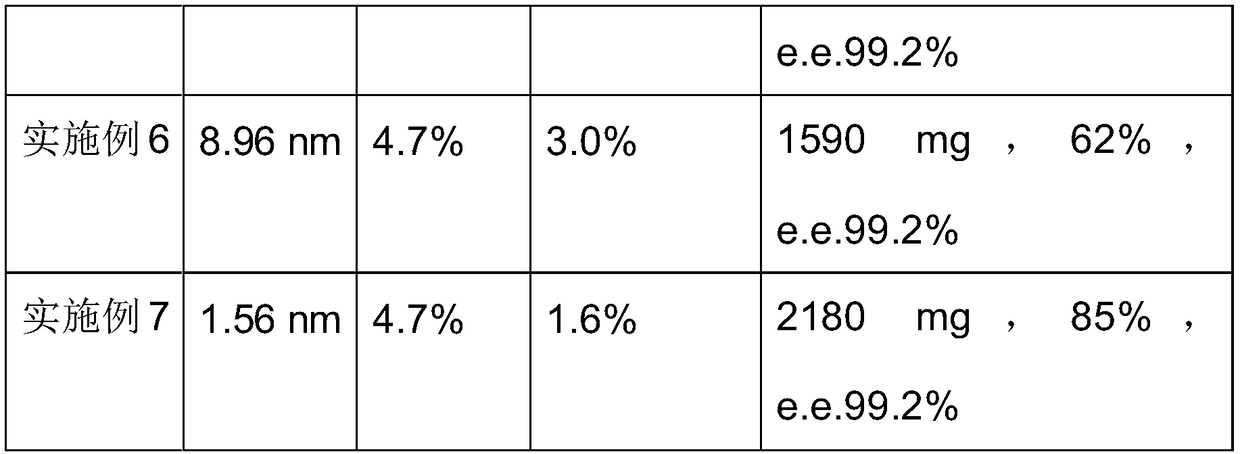Method for preparing (R)-1-(2-naphthyl) ethylamine through enzymatic resolution
An enzymatic splitting technology of naphthyl, applied in biochemical equipment and methods, enzymes, hydrolytic enzymes, etc., can solve the problems of poor reutilization rate of enzyme catalysts, slow racemization speed of nickel catalysts, etc., and achieve excellent splitting effect , High reusability, good operation stability
- Summary
- Abstract
- Description
- Claims
- Application Information
AI Technical Summary
Problems solved by technology
Method used
Image
Examples
Embodiment 1
[0026] The method for preparing (R)-1-(2-naphthyl)ethylamine by chemical enzymatic dynamic kinetic resolution of the present embodiment has the following steps:
[0027] ① First, prepare 50ml of Candida antarctica lipase B (hereinafter referred to as CALB) enzyme solution with a concentration of 3.0mg / mL, add 150mg of epoxy resin Eupergit C to the enzyme solution, stir at 25°C for 3 hours, and remove the resin from the enzyme solution. The solution was separated, washed with pH=7.0 buffer, and dried in vacuum to obtain immobilized CALB (3.0% protein content).
[0028] ②In the reaction system, in 5mL of toluene solvent, add 250mg of immobilized CALB and 2565mg of 1-(2-naphthyl)ethylamine racemate (1.5mmol, hereinafter referred to as racemate) prepared in step ① And 418mg of ethyl 4-nitrophenyl acetate (2.0mmol), immobilized nano palladium (1.56nm, content 4.7%, carrier natural hydrotalcite) 400mg, H 2 The pressure is 0.02MPa, and the reaction is carried out at a constant tempe...
Embodiment 2~7
[0033] The method of each example is basically the same as Example 1, and the differences are shown in Table 1.
[0034] Table 1
[0035]
[0036]
[0037] As can be seen from Table 1, under other conditions being the same, the immobilized nano-palladium with an average particle size of 1.56nm and a palladium content of 4.7% is used as the racemization catalyst, and the immobilized CALB with a protein content of 3.0% is the best.
Embodiment 8~ Embodiment 12
[0039] Each embodiment is basically the same as embodiment 2 (that is, the immobilized nano-palladium hegudingh of embodiment 2 is used), and the differences are shown in Table 2.
[0040] Table 2
[0041]
[0042]
[0043]It can be seen from Table 2 that in the case of using the same immobilized enzyme, the chemical enzyme resolution effect of Example 11 (at a racemization temperature of 90° C. and a hydrogen pressure of 0.02 MPa) is the best. The following control experiment adopts embodiment 11.
PUM
| Property | Measurement | Unit |
|---|---|---|
| The average particle size | aaaaa | aaaaa |
Abstract
Description
Claims
Application Information
 Login to View More
Login to View More - R&D
- Intellectual Property
- Life Sciences
- Materials
- Tech Scout
- Unparalleled Data Quality
- Higher Quality Content
- 60% Fewer Hallucinations
Browse by: Latest US Patents, China's latest patents, Technical Efficacy Thesaurus, Application Domain, Technology Topic, Popular Technical Reports.
© 2025 PatSnap. All rights reserved.Legal|Privacy policy|Modern Slavery Act Transparency Statement|Sitemap|About US| Contact US: help@patsnap.com



